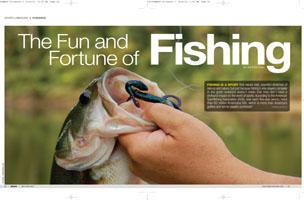
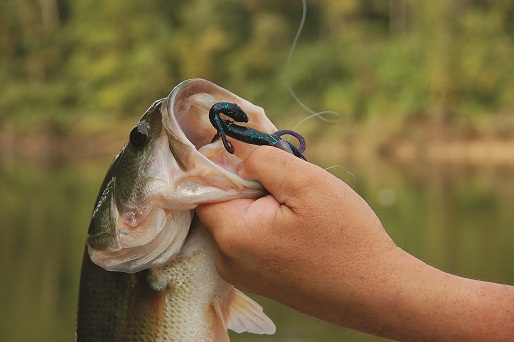 |
| Scootz/Dreamstime.com |
Fishing is a sport that values vast, peaceful stretches of silence and nature, but just because fishing’s elite players compete in the great outdoors doesn’t mean that they don’t have a profound impact on the world of sports. According to the American Sportfishing Association (ASA), over each five-year period, more than 60 million Americans fish, which is more than America’s golfers and tennis players combined.
That means the ASA has quite a job: the trade association for the entire sportfishing industry, ASA represents the interests of not just 60 million anglers, but also the entire industry, which generates $45 billion in retail sales, a $125 billion impact on the nation’s economy, and employment for over one million people.
Fishing is also a boon for more than just the economy.
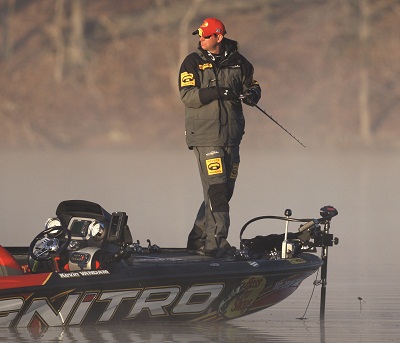 |
| Bassmaster Elite. ESPN, courtesy of Franklin County Commerce and Leisure Services. |
“Anglers contribute more than $600 million annually to state fishing and boating programs via fishing licenses plus another $700 million in fishing tackle excise taxes. These contributions are made possible through the federal Sport Fish Restoration and Boating Trust Fund,” says Mary Jane Williamson, communications director, ASA.
Beyond just license fees and taxes, anglers are, by nature of their sport, conservationists, says Williamson. Unlike many sports, the very existence of fishing depends on maintaining a healthy environment and sustainable practices.
But even with all this support, access remains the main challenge for the sport. Rapid land development and regulations continue to diminish available waterways for fishing, putting increased value on publicly owned lands to provide opportunities for the sport. Fortunately, many of America’s communities and organizations, both public and private, are actively preserving and caring for some of the country’s most outstanding lakes, ponds, rivers and shores. That’s a good thing, since fishing is a growing sport and a time-honored tradition in many places.
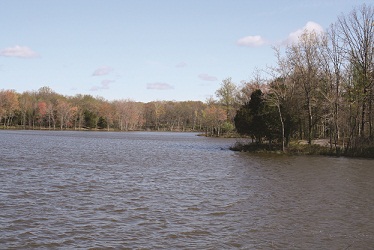 |
| Arrowhead Lake |
Illinois Angling
Speaking of traditions, fishing is so popular in Williamson County, Illinois, that during fishing season, the phone at the Williamson County Tourism Bureau sometimes rings off the hook.
“I publish the fishing report on our Web site, and if that report comes to us late, you can bet there are going to be phone calls, a lot of them,” says Shannon Johnson, executive director, Williamson County Tourism Bureau. The Bureau also prints fishing and hunting reports each season, each of which goes out to more than 3,000 people.
Williamson County, a hub of Southern Illinois, has four prominent fishing destinations.
“Crab Orchard Lake holds three or four tournaments each year, and their biggest is the Crab Orchard Lake High School Bass Classic,” says Johnson. “The Illinois High School Association actually started offering fishing as an elective course in the high schools, and Southern Illinois University is now recruiting our students for their college fishing team.”
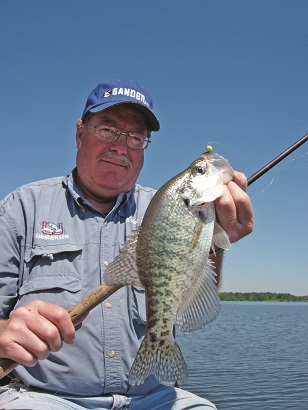 |
| Crab Orchard Lake. Photos Courtesy of Don Gasaway |
Regional Lake of Egypt, owned by the Southern Illinois Power Cooperative (SIPC) and managed together with the state, is a cooling lake for the power plant, meaning all 2,300 acres of water stay warm year-round, creating the ideal habitat for the lake’s famous population of crappie, largemouth and striped bass, channel catfish and bluegill.
Located inside one of the nation’s largest refuges, Crab Orchard National Wildlife Refuge, Little Grassy Lake is four miles long, one mile wide, up to 80 feet deep and purported to be one of Illinois’s most picturesque lakes. Devil’s Kitchen Lake, famous for its deep and pristine water, is also within the refuge, offering clear views up to twenty feet below water. Devil’s Kitchen is also one of a few Illinois lakes that can sustain a population of rainbow trout, thanks to its pure, deep waters.
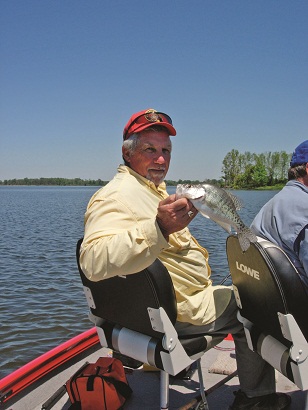 Crab Orchard Lake is a 6,965-acre reservoir at the center of the Crab Orchard National Wildlife Refuge. The Illinois Department of Natural Resources (IDNR) stocks Crab Orchard with largemouth bass, which contributes to the lake’s reputation for a superior fish population. The lake also offers, white bass, crappie, flathead and channel catfish and bluegill.
Crab Orchard Lake is a 6,965-acre reservoir at the center of the Crab Orchard National Wildlife Refuge. The Illinois Department of Natural Resources (IDNR) stocks Crab Orchard with largemouth bass, which contributes to the lake’s reputation for a superior fish population. The lake also offers, white bass, crappie, flathead and channel catfish and bluegill.
Williamson County is a fishing favorite, which is why the area has also amassed amenities, attractions and lodging to delight its many visitors. In addition to a growing and popular wine trail, Williamson County offers, according to Johnson, “a lot of unique homegrown and family-owned restaurants.” The county also boasts around 1,500 hotel rooms and 29 lodging facilities, as well as the Frontier League attendance record-winning Southern Illinois Miners.
Florida’s (Almost) Infinite Lake
In Florida, there’s a county where an angler can stay on the water all day and never fish the same square mile of water.
“Here in Lake County, we have water in the 130,000-acre range (203 square miles). The Harris Chain of Lakes accounts for 50,000 of those 130,000 acres, so obviously, it’s pretty large,” says Robert L. Chandler IV, coordinator, Economic Development and Tourism, Lake County Board of County Commissioners.
That’s no exaggeration. In fact, the Harris Chain of Lakes, which is about 40 miles northwest of Orlando, actually consists of nine interconnected lakes, lakes that were once in serious danger of being overtaken by the invasive weed hydrilla.
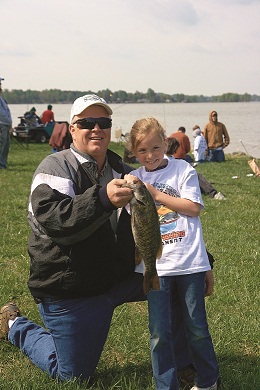 |
| Kids' Fishing Tournament. Photo courtesy of Julie Sayer |
Thirty years ago national bass tournaments frequented the Harris Chain of Lakes, until 1990, when B.A.S.S. Megabucks held an event with a record-setting low for average catch rate. The problem with hydrilla, as well as the problems with the chemical treatment to eradicate hydrilla, began long before 1990, but fortunately, Lake County had a team of dedicated experts on hand, and today great bass fishing has returned.
Today in Lake County, fishing’s golden days have clearly returned.
“The NBC Outdoor Network filmed a Wounded Warrior fishing trip here that just aired last week,” says Chandler. “ They recorded the largest largemouth bass —13.3 pounds—ever caught on film.”
The View from Virginia
If you’re looking for moonshine or fishing, Debra Weir says that Franklin County, Virginia, is the place to be.
“We’re the moonshine capital of the world, but we’re also known for fishing,” says Weir, tourism and projects manager, Franklin County. “It’s not a bad combination.”
Franklin County is one of several locations on the Fish Virginia First trail, a cooperative group that links some of the most desirable locales in Virginia, a state that draws more than 800,000 anglers each year.
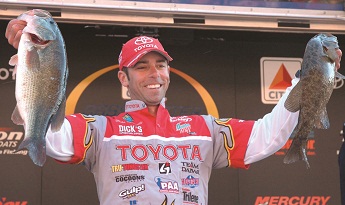 |
| Bassmaster Elite. ESPN, photo courtesy of Franklin County Commerce and Leisure Services. |
Franklin County’s Smith Mountain Lake is the largest freshwater lake in the state, offering up 20,600 acres of deep mountain emerald water with 500 miles of shoreline. Bass, crappie, striper, and record-setting catfish (the national record is in Central Virginia) await in Smith Mountain Lake.
Owned by American Electric Power Company and managed primarily for hydroelectric power generation, Smith Mountain Lake has a number of boat ramps (public and private) and marinas as well as picnic areas, beach, campground, cabins and a handicapped-accessible fishing pier. This April, Smith Mountain Lake will host the East Super Regional College Bass Tournament, televised on ESPN.
“It’s unique because with most college sports teams, you think of football or basketball, but at the college here, the big nationally winning team is bass fishing. They’re currently number five in the nation,” says Weir.
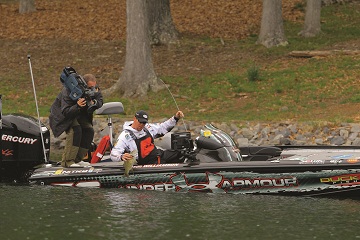 |
| Bassmaster Elite. ESPN, photo courtesy of Franklin County Commerce and Leisure Services. |
After a remarkably successful first year, the Oakley Big Bass Tour, a national open big bass tournament series designed exclusively for amateur anglers, returns to Smith Mountain Lake. More than 260 amateur anglers amassed for last year’s competition, which pays out prizes by hourly weigh-in, a non-traditional system that allows amateur anglers to collect big sums for a day on the water.
“I can’t say enough about how nice it’s been to work with Oakley staff,” says Weir. “They really try to give back and get involved with the community.”
Saltwater and Beyond
Perched on the eastern tip of Florida, Palm Beach has the best of a lot of worlds, and that extends even beyond its coastline. That might be the reason why this community is home to one of the country’s oldest fishing clubs, as well as the KDW Classic and a number of the sport’s records.
“In last year’s KDW Classic, they set a record for the most sailfish caught, over 700,” says Palm Beach’s biggest fan, George Linley, executive director, Palm Beach County Sports Commission. “In general, in Palm Beach County, we have some of the best fishing in the U.S. The gulf stream plays a big part in that, making this a great place for year-round fishing, whether it’s freshwater – bass – or billfish in the deep blue sea.”
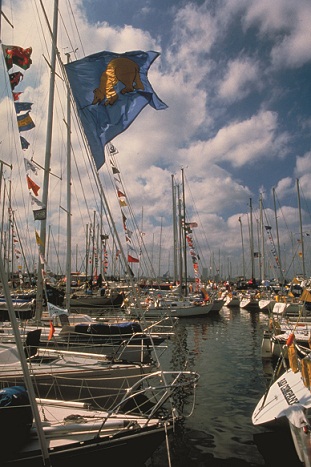 |
| MKE Harbor closeup - The McKinley Marina, Milwaukee's only public lakefront marina, offers 655 slips with floating docks, onshore fishing and a break wall pier fish cleaning station. Photo courtesy of VISIT Milwaukee. |
The 2012 Palm Beach County KDW Classic, hosted by the City of Riviera Beach and the West Palm Beach Fishing Club (WPBFC), takes place this June at the Riviera Beach Marina. Palm Beach County also hosts the Sailfish Open, created by World Fishing Tours, each February.
“Many of the captains were CEOs of Fortune 500 companies, so it was a crowd of affluent corporate and community leaders who came down for the three-day tournament, which included two days of highly competitive fishing,” says Linley.
One of a three-leg series, the event went out to 2 million households on NBC Sports and brought in over $1 million in economic impact and 1500 hotel nights.
According to the event’s Web site, The Sailfish Open, which for the past three years fished out of Hawks Cay in The Keys, made the move north to Palm Beach for one reason, exceptional sailfish prospects.
Open water is wonderful, but Palm Beach also offers outstanding bass fishing at Lake Okeechobee, Florida’s largest freshwater lake. Over 730 square miles, approximately half the size of the state of Rhode Island, Lake Okeechobee is home to many marinas, including Torry Island marina, “some of the greatest fishing you’ll find in the state of Florida,” according to Linley.
Big City Fishing
If you think cities aren’t for fishing, then you haven’t given Milwaukee a visit lately. Located on the shores of Lake Michigan, the largest sport fishery of all the Great Lakes, with more than 100 species of fish recorded, Milwaukee touts more records caught out of the Port of Milwaukee on Lake Michigan than in any other port in the state.
 |
| Milwaukee's past and present take shape in a downtown skyline shared by gleaming, modern architecture and historic buildings filled with character. Set against the dramatic backdrop of Lake Michigan, Milwaukee is a cosmopolitan city that combines Midwestern friendliness with sophisticated flair. Photo courtesy of VISIT Milwaukee. |
“Whether you’re a professional or amateur with a passion for fishing or sports in general – Milwaukee is a great place to be,” says Carrie Woods, tourism public relations specialist, VISIT Milwaukee. “With a backyard filled with over 22,300 square miles of open water in Lake Michigan, the city offers plenty of space to reel in the big one, as well as parks, rivers, piers and docks filled with opportunities to find your fish.”
Also, within a 30-minute drive from downtown Milwaukee are Pewaukee Lake and Muskego Lake. Pewaukee Lake is known for having “Wisconsin’s hottest musky waters” as well as crappies, perch, various types of bass, walleyes and northern pike. In addition to a boat launch, the park allows fishing in a designated area on the pier.
Unique river fishing can also be found in Milwaukee, with salmon, steelhead and brown trout fishing in the Milwaukee River at a number of parks, including Caesar’s Park, Kern Park, Estabrook Park and Kletzsch Park.
The Menomonee River, with its brown trout, salmon and walleye, can be accessed from along the Hank Aaron State Trail and via the Menomonee River Canals. Salmon is one of Milwaukee’s hometown fish, in fact, with the Brew City Salmon Tournament bringing 125 boats with up to 500 anglers to the city each August.
Anglers Away
For more information about the fishing industry or where to find your next big catch, visit the American Sportfishing Association at www.asafishing.org.

